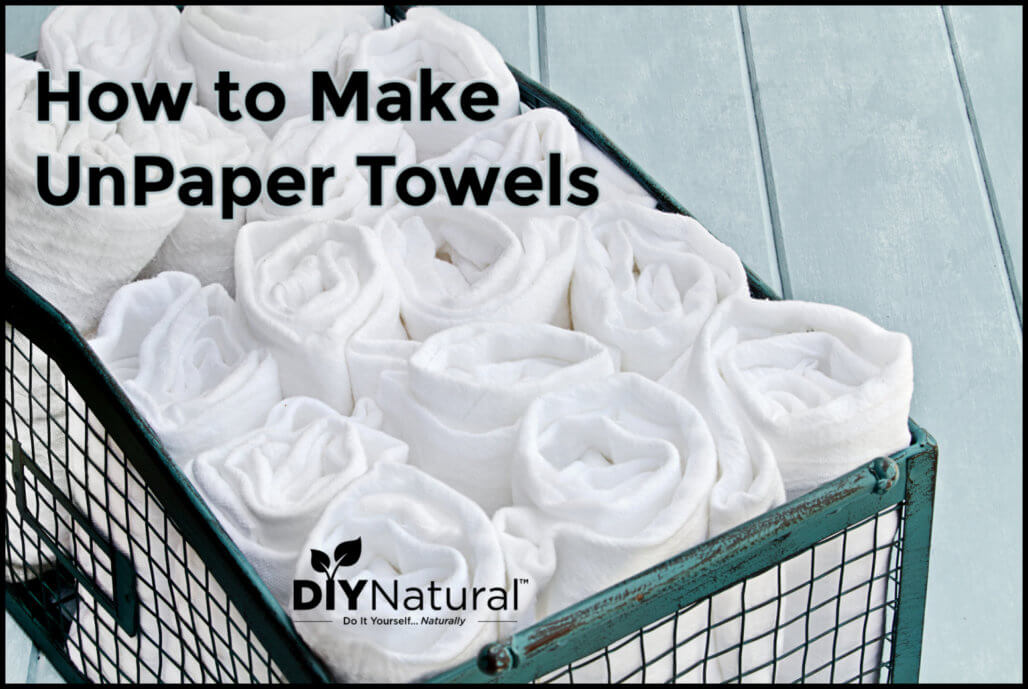

Learn how to make unpaper towels so you never have to buy paper towels again. This is also great for use as untoilet paper and many other household messes.
At the start of Spring in 2020, we were hit with a world-changing event that left most of us stunned. Food became short in supply as folks realized that they may not be able to get out as much. Most were forced to leave their jobs, leaving the nation with fewer and fewer workers to take care of stores, even for essentials. Two of those things that were in very short supply were paper towels and toilet paper. I’ve been making my own for years. Now is a great time for you to learn how to make them!
Take Your Measurements
First, you’ll need to decide what size you want. The average paper towel sheet is 11×12 inches and the average square of toilet paper is 4×4 inches. I used to use single sheets of paper towels and the average toilet paper usage is 3-4 squares. We’ll work with those numbers. For your own use, you may want different sizes. Track your usage to see what works best for you.
Fabrics for UnPaper Towels
For both applications, cotton flannel seems to be the best. It’s soft and absorbent and rarely shrinks, even in a hot dryer. I dry mine outside, but you can do either. I wait until there is a sale on flannel and buy a few yards at a time, or I take my old flannel pajamas and cut them up, repurposing them. This works really well with PJ pants that are worn beyond usable anymore. You may not get the exact sizes you want, but you can use a few if necessary. I also wash mine with a natural detergent like this one and use vinegar-based fabric softener. It makes the cloths very soft and absorbent. Regular fabric softeners have a waxy type residue that seems to repel moisture rather than absorb it.
Single or Double Layer UnPaper Towels?
This point is up to you. I make most of my unpaper towels single layer, but I have a few double layer ones that I can use for big spills. With a single layer, you’ll only need to stitch the edges, and with a double layer, you’ll need to tack the centers down. I run a stitch from corner to corner in a big X to keep it from bunching up.
Cutting Your Fabric
Once you’ve figured out your sizes, cut your fabric into pieces. You’ll want then at least 1/4″ over the size you want to allow for stitching on the edges. If you don’t want to or can’t use a sewing machine, you can hand sew a blanket stitch on the edge or use pinking shears to keep the fabric from unraveling. You can also cut different shapes rather than just squares or rectangles. I have some circular reusable cotton pads that are about 3 inches across. I use these for facial toner and removing makeup.
READ RELATED: Two ‘sore’ signs in your mouth that can signal a B12 deficiency – seek medical help
Finish The Edges
Once you have the pieces cut, you can finish them as you wish. With the single layers, you can sew a zigzag or blanket stitch on the edge or use pinking shears as above. With the double layers, first, turn the fabric so the right sides are together, stitch all the way around, leaving a small opening. Then use this opening to turn it right side out. Iron the edges for the best results and stitch the edges down, closing the small opening as you go. Run a stitch from each corner to make that X or if sewing by hand, take a few tack stitches here and there. These steps will keep the whole thing lying flat and not bunching up on you.
Using Your UnPaper Towels
I’ve seen cute things where you can attach buttons or snaps to keep the pieces together so you can roll them onto a paper towel roll. Sure you can do that, but it’s easier to just fold them and keep them in a basket on the counter or in a cabinet. I do the same with my untoilet paper and keep it on the back of the toilet. I have a trash can with mesh side for airflow that the used ones go into.
These are used for urine only at my house. If you use them for the rest, I’d make a bucket like you’d use for cloth diapers and keep them in there until you’re ready to wash them. I also use mine for all sorts of other things like cleaning the faucet and using it on my skin after coloring my hair. Some things may stain the fabric, like some hair color or makeup, but it doesn’t affect the usage. If they get really stained, I relegate them outside for use in the garden.
Cleaning Your UnPaper Towels
Most of the time I just toss mine in the wash with the rest of the sheets and towels. You can run a special load for very stained or dirty cloths, using an extra stain remover. Drying them outside in the sun is one of the best ways to disinfect them if need be. I’ve never used bleach, but you could use a mild solution in cold water. A cap full to a gallon of water is all you need. Hot water stops the disinfecting power of bleach.
Have you used or made unpaper towels? Now is the time to start!
*******
Source: DIY Natural










